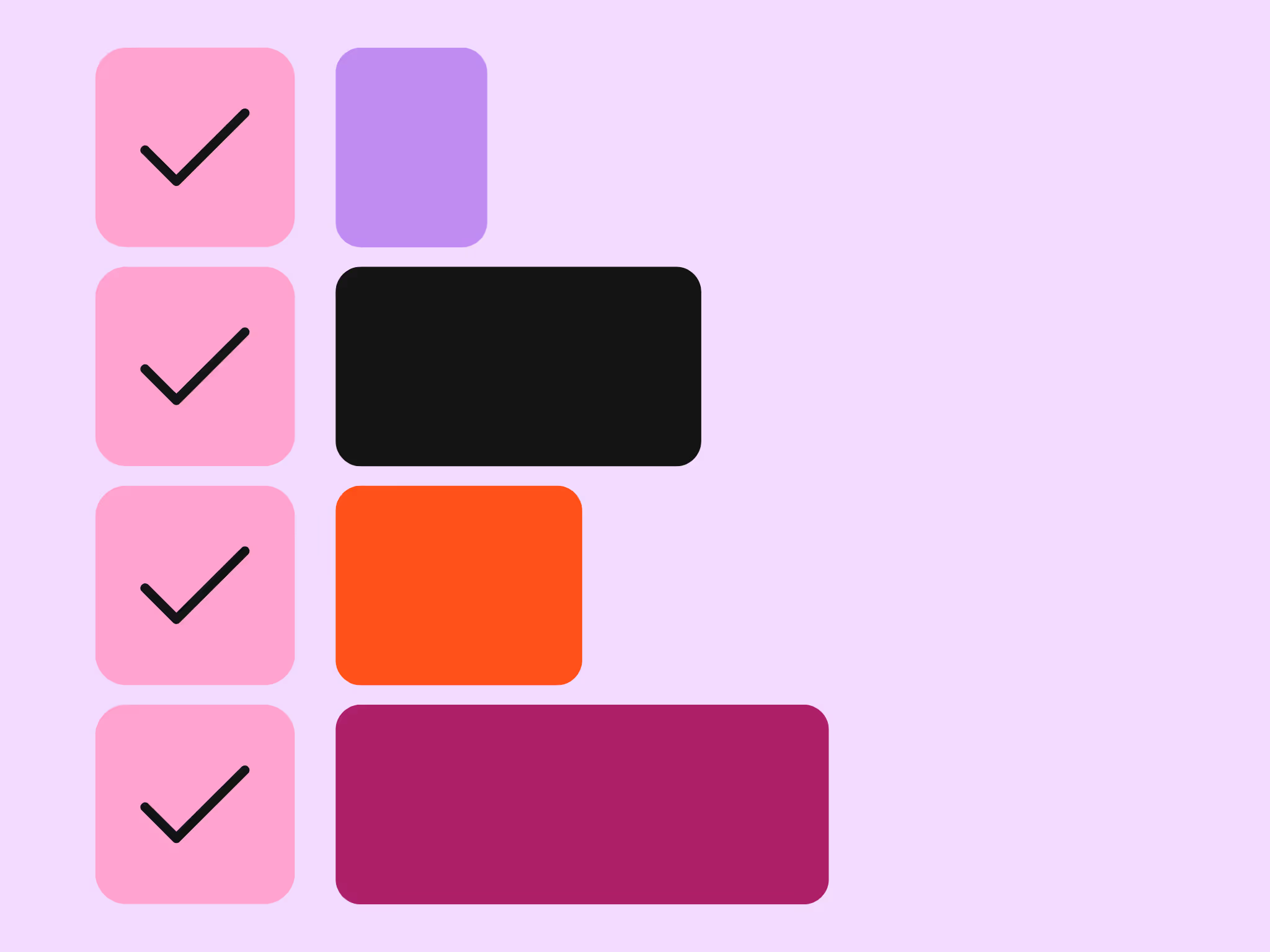Can mass email outreach allow you to reach more influencers at scale? Yes.
Does it allow you to scale with a smaller team & lower costs? Yes.
Is mass outreach easier to implement? Also, yes.
But even so, most brands shouldn’t be doing it.
Why? The most obvious point is that, out of a list of 1,000 ideal influencers, a personalized approach will convert a higher percentage into live collaborations.

At this point, you might be thinking:
“But since mass outreach is faster and requires fewer people, it’s still better than personalizing.”
So let’s address that. Here are six more reasons why you probably shouldn’t be doing mass outreach to creators.
6 reasons why you shouldn’t do mass influencer outreach
1: You taint the start of your influencer relationship
Your first impression is sticky. Mass outreach tells the creator you couldn’t spend the time to learn more about their work and craft a personalized message. No one feels valued and appreciated by receiving a bulk email.
On the other hand, sending a personalized influencer outreach email makes you stand out from day 1. The creator can feel the effort you took to vet their profile and why they’re a good fit for your brand.
Zoom out a bit and take the long-term view, beyond the immediate open and response rates. Even if the collaboration value is low (like in product seeding), your influencer relationships have a weak foundation via mass outreach — especially if you convert these creators to long-term influencer partners or affiliates.
And remember, personalizing your outreach messages doesn’t mean just writing their first name right. Everyone knows email tools can do that automatically now. Influencer Ilana Jacqueline also shared how these tools can sometimes screw up.

2: You reduce the scope of negotiation
Influencer partnerships require negotiation.
The best long-term partnerships require a detailed discussion about what works for both sides.
And generally, with mass outreach, you remove the ability to have those discussions.
Mass outreach often comes with a standardized offer. For example, $X (or X product value) in exchange for certain deliverables.
If your brand isn’t well-known & desirable to be associated with, and/or the value you’re offering isn’t in-line with what the influencer expects, you’ll get ignored. No opportunity to discuss & negotiate.
And, even if you’re inviting open conversations (instead of sending templated offers), you’ll still be worse off. If it’s clear to an influencer that they’ve been sent a templated mass mail – they’re less likely to engage in a conversation. They don’t feel valued, and they know you haven’t done the groundwork of understanding their following.
You just miss out on some conversations entirely. Conversations that might lead to some of your top-performing partnerships.
3: You risk damaging your brand reputation
Have you ever received sales outreach over and over again, and thought something like:
“Oh my god, I will purposefully never ever buy from or recommend this company just because they are so damn annoying!”
I have. You probably have. Influencers are the same. They receive a ton of inbounds, and if you’re automating crappy mass outreach, you’ll be remembered for the wrong reasons.
And even worse — influencers talk. It’s a close-knit industry. Influencers often attend the same events, collaborate with similar brands, and talk to each other about their work.
Whispers about how you sent the same email to every creator aren’t a proud badge to hold and might put off other potential influencer partners.
On the other end of the spectrum, customizing emails and investing in building solid influencer relationships will help you build social proof. Potential creator partners would want to work with you and be glad to receive your outreach email. It’s the better long-term playbook.
4. Mass outreach usually means poor vetting
In most cases, mass outreach equals a poorer quality of influencer selection.
The best of the best partnerships, the ones that induce envy from your competitors, aren’t going to come from mass outreach. They’re going to come from carefully selected & vetted creators, with personal outreach, and a uniquely negotiated partnership.
Nycole Hampton, Senior Director of Marketing at GoodRx, observes that the vetting process used before mass outreach is usually poor (or non-existent).
You can do a decent degree of vetting with an influencer analysis tool. For example, checking audience demographics, or engagement rate.
That said, the qualitative aspects (like brand fit, content style, reputation) are much harder to do en mass.
Andreaa Moise, an influencer marketing consultant, also notes that bad vetting & mass outreach are often a symptom of understaffing or inexperience.
5: You reduce your open and response rates
Influencers can spot mass emails from a mile away. An impersonal subject line, a canned email about your brand, and no mention of their work are all clear giveaways. Even if your emails make it through the spam filters, it’s less likely an influencer would open and respond to your mass message.
Remember that the good creators have their inbox flooded with mass emails. They’re not going to respond to brands that didn’t take the time to learn more about them and evaluate whether they’re a good fit for the brand. Copy-paste flatters no one.
Even if you use an enticing subject line that makes an influencer open your email, the mass message will leave a bad taste in their mouth, and they won’t respond. Take this Reddit user and influencer who blocked a brand for using a deceptive subject line.

Even worse, your emails might not arrive in the first place. Bulk emails are more likely to land in the spam folder. Take this Reddit user who used Upfluence to send mass outreach emails and noticed most of their emails were landing in spam.

Almost all email providers have spam filters set up against bulk emails. In the US, you’re also walking a thin line with the CAN-SPAM Act Compliance. Some influencers might also mark your emails as spam if it’s irrelevant to them.
6: Your pool of potential influencers isn’t infinite
Remember that funnel comparison from the beginning?

If you had an infinite number of these lists of 1,000 influencers, then you might make a business case for mass outreach. Despite all the other drawbacks.
In reality though, most brands have a limited number of really great influencers they could partner with.
It varies a lot depending on your markets & niche. And sometimes the number is big (1M+), but still not infinite.
If the pool is small, you’ll simply burn through it too quickly. And get stuck on how to scale.
And even if the total pool is huge, not every prospect is equal. There will be a subsection who are truly remarkable. Your best potential partners. You want to absolutely maximize the percentage of those people who you can get live collaborations with. Not burn through the list to get a small handful as fast as possible.
Because afterwards, you’ll be moving onto your second best list. Then your third best (and so on). There are more emails to reach out to, but they aren’t *quite* as perfect.
There may be some exceptions
Most brands shouldn’t be doing mass outreach.
However, like with anything in this industry, there’s no “one-size fits all” advice.
So, here are some potential exceptions. Specific scenarios where, even understanding all the arguments against, you may still decide that mass outreach makes sense.
1: You have a specific offer paired with a short-term strategy
Ben Williams, Influencer Team Manager at Blast, used the following fully-templated email to recruit creators:

It breaks all the rules, but it worked because:
- The offer was very specific with no room for negotiation (free ticket in exchange for content). So it made sense to cut the back-and-forth to save some work.
- The company was recruiting for a one-off event. There was no room for extending this collaboration into a long-term partnership — so the risk of hurting the influencer relationship is also non-existent.
- The total number of influencers needed was quite small, so there’s no risk of exhausting the recruitment pool too quickly.
- Ben vetted the list thoroughly with an influencer analysis tool (Modash), so he knew that every recipient was a good fit at a high level.
Nycole Hampton, Senior Director of Marketing at GoodRx, also commented that thorough vetting in advance may increase the odds of mass outreach being viable.
If you’re running a similar campaign with a fixed budget, offer, expectations, and best-fit creators’ list, doing mass outreach might work for you.
2: You’re a well-known brand name in your industry
Outreach becomes easy with brand awareness. If you’re a household name in your industry, creators will be excited to collaborate with you even if your outreach is a bulk email.
Think of a beauty creator receiving an email from Sephora — there’s little to no chance an influencer is passing on the outreach email because it wasn’t personalized.
(If it's legit. Disclaimer: look out for scam emails claiming to be Sephora or other leading brands.)
Again, your overall results would probably still be better with personalization, but bigger brands will have the leeway to get better results from mass emails because every creator recognizes them.
If you’re in this boat, and templated mass outreach is currently working, I don’t suggest that you should stop. Unless you start to find reasons to believe you’re developing a negative brand reputation.
3: You’re running a self-serve influencer affiliate program
Some types of collaboration might be more friendly toward mass outreach than others.
For example, if you decided to create a self-serve influencer affiliate program. And you’re optimizing for short-term efficiency.
(i.e. you’re not willing or able to invest in developing deeper personal relationships with those affiliates yet.)
With open self-serve affiliate programs where anybody can join, there’s no human interaction needed. Influencers just need to know about the program (they don’t necessarily need to reply to you), which mass outreach can help you achieve.
Again, personalized outreach would lead to better long-term relationships.
But if you’re in this boat, and you need to optimize for short-term efficiency (just get more people on board at the minimum possible cost), this might be the route you need to take. For now.
The middle ground: a partially-templated email
Outreach emails don’t have to be in the extreme categories. You don’t have to choose between fully-personalized and fully-templated.
The middle ground is a partially-templated email.
You can copy-paste part of the message (such as basic introductions about you / your brand), while still adding personalization..
In our outreach survey of 51 influencer marketers, 55% of participants used a partially-templated email for influencer outreach.

What you should templatize: stuff about your brand, your introduction, and any common collaboration details.
What you should personalize: compliments to the creator, info about why they’re the right fit for your brand, and any individual deliverable details.
Here’s a short-and-sweet example of a partially-templated influencer email:

Want to see more successful influencer outreach emails? Here are 14 examples from real brands.
More influencer marketing reads
If you want to get into an influencer marketing rabbithole (or just bookmark something for later), you might also like:







.avif)
.avif)
